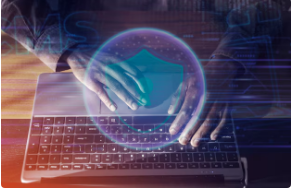In the digital age, cybersecurity has become a critical concern for individuals, businesses, and governments alike. As technology advances and the internet becomes more integrated into our daily lives, the threat landscape continues to evolve, presenting new challenges for protecting sensitive information and maintaining digital integrity. This article explores the key threats facing cybersecurity today and the solutions available to mitigate these risks.
1. Understanding Cybersecurity
Cybersecurity encompasses the practices, technologies, and processes designed to protect systems, networks, and data from cyber threats. It involves safeguarding against unauthorized access, attacks, and damage to digital assets. The primary goals of cybersecurity include ensuring confidentiality, integrity, and availability of information.
- Confidentiality: Ensuring that information is accessible only to those authorized to view it.
- Integrity: Protecting data from being altered or tampered with by unauthorized parties.
- Availability: Ensuring that information and systems are accessible when needed by authorized users.
2. Key Cybersecurity Threats
The digital landscape is rife with various cybersecurity threats, each posing unique risks and challenges:
- Malware: Malicious software, including viruses, worms, ransomware, and spyware, is designed to damage or disrupt systems, steal information, or gain unauthorized access. Ransomware attacks, in particular, have seen a significant rise, where attackers encrypt a victim’s data and demand payment for its release.
- Phishing: Phishing attacks involve tricking individuals into providing sensitive information, such as passwords or financial details, by masquerading as a legitimate entity. These attacks often use deceptive emails or fake websites to lure victims.
- Denial of Service (DoS) Attacks: DoS attacks aim to overwhelm a system or network with excessive traffic, rendering it inaccessible to legitimate users. Distributed Denial of Service (DDoS) attacks, which involve multiple systems, are particularly challenging to defend against.
- Man-in-the-Middle (MitM) Attacks: In MitM attacks, an attacker intercepts and potentially alters communications between two parties without their knowledge. This can lead to unauthorized access to sensitive information or manipulation of data.
- Data Breaches: Data breaches involve unauthorized access to sensitive or confidential information, often resulting in the exposure of personal, financial, or proprietary data. Breaches can occur due to vulnerabilities in systems, human error, or malicious attacks.
3. Solutions and Strategies for Enhancing Cybersecurity
To combat the evolving cybersecurity threats, a multi-faceted approach is essential. Here are key strategies and solutions for enhancing cybersecurity:
- Implement Strong Authentication Mechanisms: Multi-factor authentication (MFA) adds an extra layer of security by requiring users to provide additional verification factors beyond just a password. This significantly reduces the risk of unauthorized access.
- Regular Software Updates and Patch Management: Keeping software, applications, and systems up to date with the latest security patches is crucial for protecting against known vulnerabilities. Automated patch management tools can help ensure timely updates.
- Employee Training and Awareness: Educating employees about cybersecurity best practices, such as recognizing phishing attempts and using strong passwords, is essential for reducing human error and enhancing overall security.
- Data Encryption: Encrypting sensitive data ensures that even if it is intercepted or accessed by unauthorized parties, it remains unreadable and protected. Encryption should be applied to data at rest and in transit.
- Network Security Measures: Implementing firewalls, intrusion detection and prevention systems (IDPS), and secure network architectures helps protect against unauthorized access and cyber attacks. Regular network monitoring and analysis can identify and respond to potential threats.
- Incident Response Planning: Developing and maintaining an incident response plan ensures that organizations are prepared to respond effectively to cybersecurity incidents. This includes defining roles and responsibilities, establishing communication protocols, and conducting regular drills.
- Backup and Recovery: Regularly backing up critical data and systems ensures that, in the event of a cyber attack or data loss, data can be restored with minimal disruption. Backup solutions should be tested and verified to ensure reliability.
4. Emerging Trends and Future Directions
As technology continues to evolve, so do cybersecurity threats and solutions. Some emerging trends and future directions include:
- Artificial Intelligence (AI) and Machine Learning: AI and machine learning are increasingly being used to enhance cybersecurity by identifying and responding to threats in real-time. These technologies can analyze large volumes of data to detect patterns and anomalies that may indicate a security breach.
- Zero Trust Architecture: The Zero Trust model operates on the principle of “never trust, always verify.” This approach requires continuous verification of user identities and device security, regardless of whether they are inside or outside the network perimeter.
- Quantum Computing: While quantum computing has the potential to revolutionize many fields, it also poses a threat to traditional cryptographic algorithms. Preparing for a post-quantum world involves developing quantum-resistant encryption methods to ensure future data security.
- IoT Security: The proliferation of Internet of Things (IoT) devices introduces new security challenges. Ensuring the security of IoT devices and integrating them into a comprehensive security strategy is critical for protecting against potential vulnerabilities.
Conclusion
Cybersecurity in the digital age is a dynamic and complex field, with threats evolving as technology advances. Addressing these threats requires a comprehensive approach that includes implementing strong security measures, educating users, and staying abreast of emerging trends and technologies. By adopting best practices, leveraging advanced tools, and preparing for future challenges, individuals and organizations can better protect their digital assets and maintain a secure and resilient digital environment.











